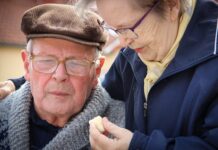By Michael Miskis
It’s important to think about safety and fall prevention before the snow falls and icy conditions form around your home. As one ages, it’s increasingly important to assess one’s environment and be sure to reduce obstacles and impediments that could cause accidents, such as a fall, possibly resulting in serious injury.
“An ounce of prevention equals a pound of cure” is a phrase that comes to mind.
To start, schedule a home environmental assessment with a provider you trust so that you understand every facet of your environment with an eye toward reducing risks and making a safer environment.
A home environmental assessment can identify potential hazards that in many cases can be easily remedied so that your home becomes a safer place during any season.
With the knowledge that your home is safe, you can continue enjoying your daily routines of working, shopping, dining, socializing, making doctor visits and exercising.
The winter months can make even these routine activities a challenge.
When the weather gets dangerous, ask yourself, “Do I really need to go out at this time or can it wait a day?” By staying keenly aware of your surroundings and being aware of your limitations and risk factors you are able to make a better and safer decision about attempting to walk on an icy walkway or on slippery stairs.
Many people have difficulty asking for assistance. However, there are resources available that can help. If the weather is bad and you have to attend an appointment, consider having someone arrange transportation for your appointment. Also, if you are running out of medication, arrange medication delivery.
There are multiple ways to stay in shape and maintain your mobility, balance and strength during the winter months. If you typically walk outdoors for exercise, consider walking indoors or riding a stationary bike. Other excellent choices include yoga and Tai chi, which are two popular in-door group activities that help improve flexibility and balance and are proven to reduce falls.
Injuries do happen to everyone. The risk of an injury is high when someone has a fall. When someone is injured, their ability will be impacted in some way whether it’s having difficulty with ambulation or with completing activities of daily living such as putting on a shirt. When this happens, rehab becomes a vital part of recovery and is key to re-establishing ability and independence.
When rehabilitating, don’t shy away from giving providers feedback and also asking for help when needed. Making sure you’re in the correct therapeutic program is important to ensure a good therapeutic outcome. A great therapist will ask and incorporate someone’s individual goals into the treatment plan of the program.
The ultimate goal as a therapist, is to work with individuals and help them remain at their optimal level of function so that they can remain safe and independent for as long as possible.
Michael Miskis, MSPT is a physical therapist for PACE at Element Care in Beverly, MA. For More information call 877-803-5564 or visit www.elementcare.org for more information. Archives of articles from previous issues can be read at www.fiftyplusadvocate.com.












